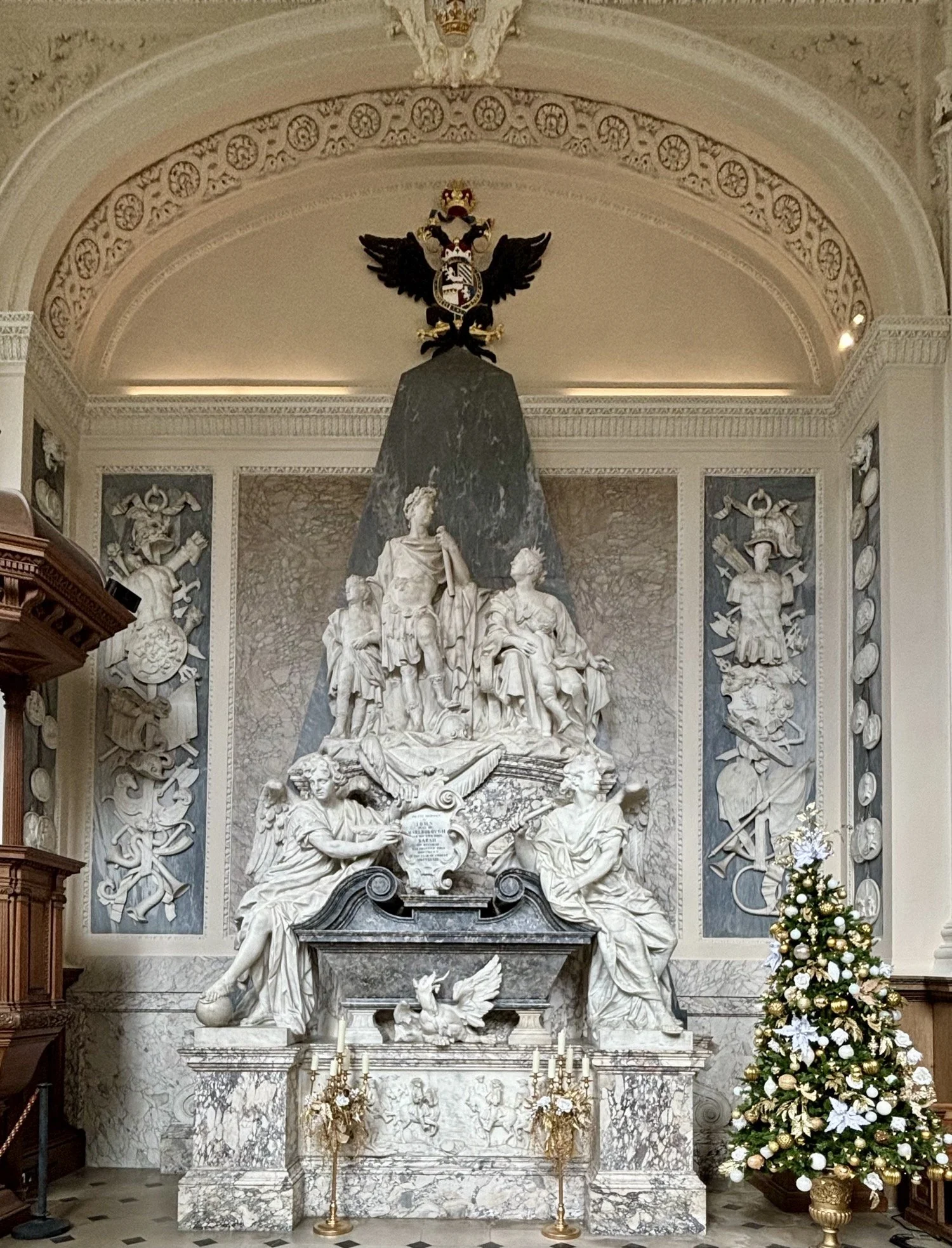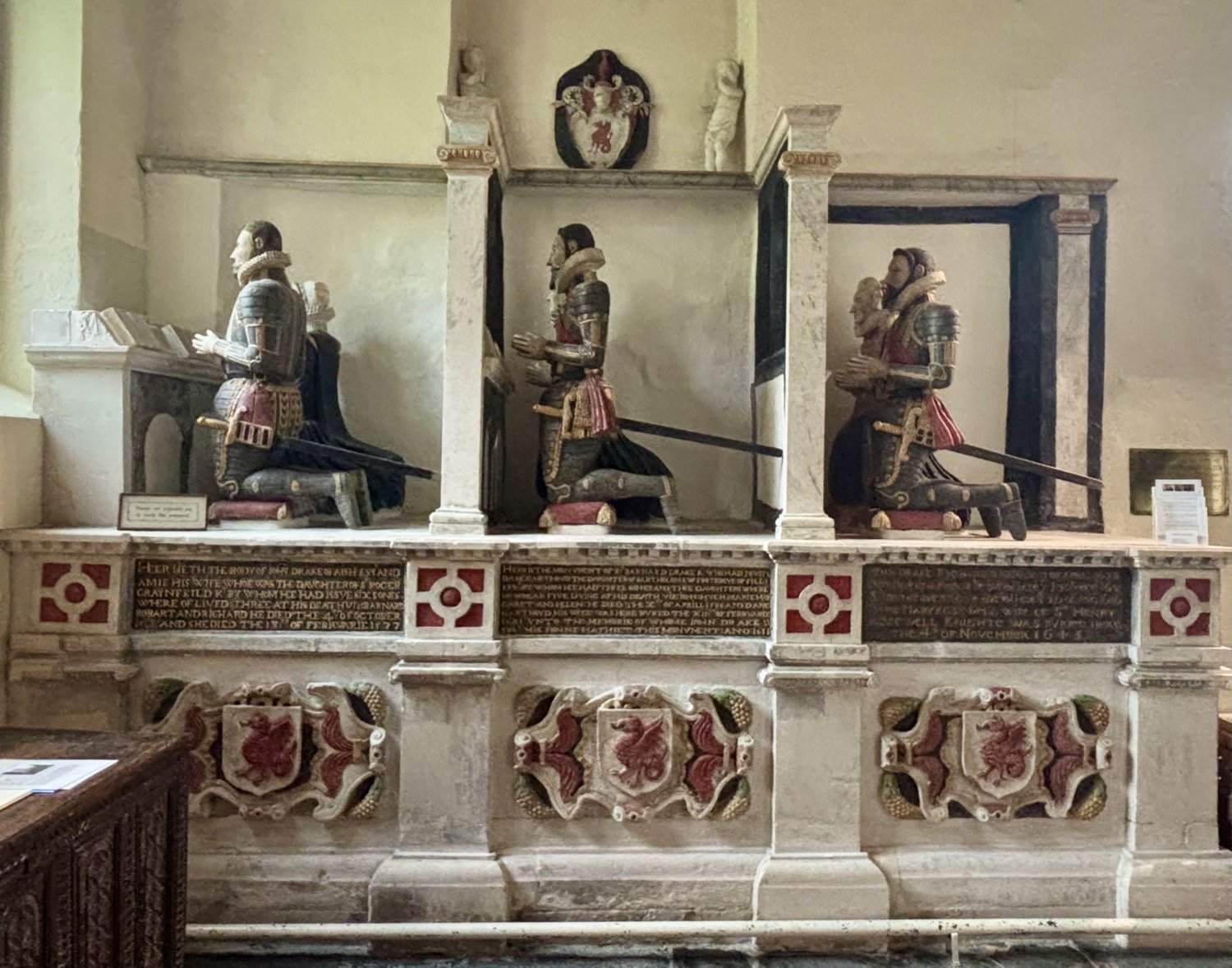Musbury and its Famous Connections
Looking more closely at Musbury
I’ve been for a visit to the village of Musbury. Unless you live in East Devon you’ve probably never heard of it - but it has connections to two of the most famous names in English history.
It’s one of those villages that straddle a main road: you drive straight through without really noticing, never thinking about who lived here or what went on. And then, just as you’re leaving, you notice a slate plaque under a tree. But it’s too late - you’ve passed it, there are cars behind you, and you can’t stop to see what it commemorated.
If you’re not in a rush to get to Axminster or the Lyme Bay Winery (very close, and worth a visit), turn round and head back to explore Musbury properly.
So… the plaque. It says:
Sir Winston Churchill? Why was he in Musbury? A bit of digging, mostly on the Musbury village history website, provided some answers.
Early families and the hill fort
Musbury is probably named after the Iron Age hillfort that looms over the village on its eastern edge. The Romans may have had a camp there, or maybe not; but it’s likely the Anglo-Saxons who followed them had some sort of settlement. One of the early families here were the Drakes (or Drago/Draco, from the Latin for “dragon”). At least, history strongly suggests so.
The Drakes take root
By the Middle Ages the Drake family was certainly established in Musbury, living just below the hill in a house called Mount Drake. A few stones were still visible in the 1920s, but nothing remains now except the field name.
When you hear “Drake” you probably think of our swashbuckling Elizabethan privateer, Sir Francis Drake, the one who famously finished his game of bowls on Plymouth Hoe before single-handedly defeating the Spanish Armada. Such is the stuff of legend.
A family clash
Born in Tavistock, he went to sea at a young age and made his name through adventures that culminated in his circumnavigation of the globe. When he returned in triumph, Queen Elizabeth knighted him on board his ship, the Golden Hind, in 1581. Drake then decided to adopt the coat of arms of the Musbury Drakes, to whom he was distantly related (but without any right to use their arms).
The head of the Musbury family at the time was Sir Bernard Drake, the only one in ten generations not called John. He was not at all pleased with this upstart relative claiming his heraldry and challenged him in court, supposedly boxing his ears in front of the Queen and her courtiers. Elizabeth resolved the matter by giving her favourite pirate his own coat of arms, which settled the dispute if not the rivalry.
Ashe House - fire and fortune
By then the Drakes of Musbury had bought Ashe House, just outside the village. John Drake (another one!) had been one of the auditors appointed to assess nearby Newenham Abbey after its suppression under Henry VIII - a lucrative job.
During the Civil War, the Drakes supported Parliament. As a result, Ashe was seized and almost entirely burnt to the ground by Royalist forces. After the Restoration of 1660, Charles II made John Drake a baronet. He rebuilt Ashe and returned there with his family.
Connections beyond the village
It was his daughter Elizabeth who married Sir Winston Churchill of Dorset, and they spent time living at Ashe. Their daughter Arabella was certainly born there. She later became maid of honour to Anne, Duchess of York, and began a ten-year affair with Anne’s husband, the Duke of York (the future James II). Arabella bore him four children and received a pension of £1,000 a year, before marrying and having four more.
Her younger brother John was born in 1650, possibly at Ashe, possibly at nearby Trill Farm; but he was definitely baptised in the chapel at Ashe. John didn’t excel at school but turned out to be an excellent tactician and military commander. He married Sarah Jennings in 1677, and the two of them would later become one of the most formidable partnerships at court.
John helped suppress the Monmouth Rebellion and later supported William of Orange in the Glorious Revolution of 1688. For his loyalty and military skill he was rewarded with a new title: the Earl of Marlborough.
Yes - that Marlborough. The general whose victories reshaped European politics and whose great palace at Woodstock became Blenheim.
He served under several monarchs, navigating the politics astutely while winning triumphs on the European battlefields. The great conflict of the age, the War of the Spanish Succession, made Marlborough’s name immortal. After his victory at the Battle of Blenheim in 1704, Queen Anne elevated him to a dukedom and granted him the land on which Blenheim Palace now stands.
Wartime Prime Minister Sir Winston Churchill came from this same family. His father was a younger son, so he didn’t inherit the title, but he was born at Blenheim and often returned there. He visited Musbury only once. He was the five-times-great-grandson of the first Duke and Duchess of Marlborough.
And the famous connections don’t end there. The late Princess Diana was a seven-times-great-granddaughter of the first Duke and Duchess. Both she and Sir Winston Churchill are descended from their second daughter, Anne Churchill. Which means our present Prince of Wales is also distantly related to the Drakes of Musbury.
Traces in the church
As for monuments, the ones to the early Drake family in Musbury church can, I think, almost give the later ones a run for their money.
This is the monument designed by Sarah for her husband John Churchill, first Duke of Marlborough, descendant of the Drakes of Musbury. He died in 1722 and Sarah followed in 1744. Both are buried at Blenheim.
And this is the Drake family monument created in 1611 by John Drake, commemorating three generations of his family.
You just never know when an ordinary-looking village is going to turn out to have some extraordinary history.
With grateful thanks to all those who researched the history of Musbury and made it available on their website: https://www.musburyheritage.co.uk


